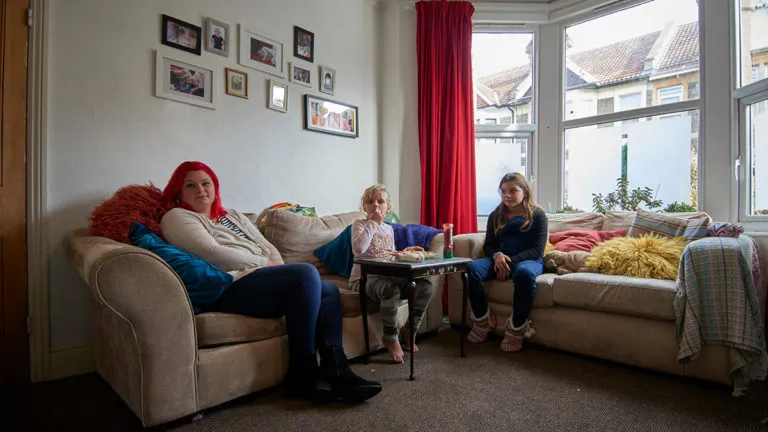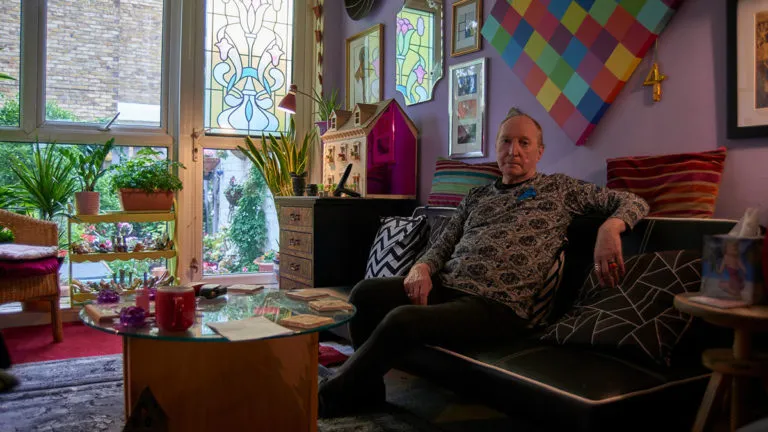Building successful and sustainable neighbourhoods
Published: by Guest blog

Guest blog by Jo McCafferty, Levitt Bernstein
Following the announcement that Goldsmith Street, a social housing project in Norwich, is this year’s well-deserved winner of both the Stirling Prize and the inaugural RIBA Neave Brown Prize for Housing, there’s been a flurry of articles in the press.
Many of these pieces congratulate the skills and tenacity of the architects – Mikhail Riches and Cathy Hawley – and the bravery and vision of their client, Norwich City Council. Some predict a renaissance of local authority delivered, high quality housing projects across the country. And it’s about time; I hope this crystal ball gazing proves to be more than just that.
The case for quality design
It’s a year this month since the new edition of the Housing Design Handbook, co-authored by David Levitt and myself, was published. I’ve spent much of my time since then touring the country, talking to local authorities, housing associations, developers, contractors, architects, and students about how to achieve quality in housing. The book was written not only as a campaigning document, but also as a primer to provide a firm foundation of practical knowledge, an aid not only to architects but to everyone involved in commissioning housing.
It intended to demonstrate that sacrificing design quality in favour of basic numbers would be both dangerous and counterproductive. We all know that homes must be built to last, and that replacing them after just a couple of generations is not merely wasteful and environmentally unsustainable but can be deeply disturbing for the people affected. It would be a tragedy if a significant proportion of homes built in the future simply replace those that have failed to last.
Writing more than 2,000 years ago, Vitruvius identified ‘firmness, commodity and delight’ as essential components of a well-designed building. However, it appears that firmness and delight are often forgotten in new housing, despite it being the most significant component of built form in the urban landscape, while its ability to achieve a ‘sense of place’ provides an essential basis for social cohesion.
A radical rethink
In recent years, local authorities in London have started to build their own housing again. Some boroughs have even established their own development companies to circumvent lengthy procurement processes and increase borrowing capacity, while local communities are instigating co-housing projects. But, regrettably, these small-scale initiatives alone are not going to solve the housing crisis – not even close.
Shelter and others have called for renewed state funding. Others have called for a reskilling of borough departments or even a centrally funded national housebuilding agency. Without a radical rethinking of procurement and funding for truly affordable homes, homelessness will continue to soar, and with it a rising burden on all the major services: health, education and policing. Meanwhile, accessible central locations will increasingly be solely for the wealthy.

Defining ‘good’ housing
This is the context in which David Levitt and I invited some 26 of the country’s most esteemed designers (including David Mikhail of Mikhail Riches) and clients to discuss the challenges and principles in the design of good homes, drawing from exemplary projects in the UK and beyond. Much can be forgotten in the drive for numbers, but this manual aims to refocus attention on the importance of quality in the creation of the fundamental right for all: good housing that lasts.
Our analysis proved beyond doubt, that despite far too much mediocre and poor development smeared across the UK, there are many good examples of housing of all generations; they have stood the test of time and are supporting happy, healthy and mixed neighbourhoods. Evaluation of these and other built projects, through discussions with their designers, contractors, residents and housing managers is crucial in defining what works and what doesn’t, in order to influence what we design and build tomorrow.
This is particularly vital with the current focus on offsite construction methods, new technologies, speed and efficiency. Meaningful analysis of long-term cost-in-use for all scales and types of development also needs to inform our thinking. At the heart of all this, there has to be a genuine commitment from all those involved in the funding, design, delivery and management of housing to the social purpose of creating good homes – whether social or private, just ‘good housing’ in the words of Neave Brown – a message he delivered with such passion and poignancy on being awarded the RIBA Gold Medal in October 2017.
Housebuilding after Grenfell
Just as almost all books on housing published since 1968 had to mention the collapse of Ronan Point, so the Grenfell Tower fire of June 2017 now represents a watershed in the study of regulation and procurement. Unless some way is found to avoid the disconnect between the component parts of the entire design and construction team and those in control of managing and maintaining the housing itself, similar issues are likely to reappear. New forms of contract (or the reuse of Traditional Contracts, as exemplified at Goldsmith Street) are essential to bind these relationships together formally through the design and construction process, and to ensure that the team working together at the beginning of a project is still there at the end.
Architectural education also has its role to play in engaging young designers in housing – and it’s only of late that schools of architecture in the UK have begun to run programmes focussing on this most fundamental building typology. From the late 1970s until recently, the design of housing did not find its way into a student’s portfolio and has been actively discouraged as an area of study by some tutors in schools of architecture across the UK. To many studying architecture in central and northern European countries outside the UK and in the US, this seems incomprehensible – outrageous even. For students to have no understanding of the history, joys and complexities of designing homes that they themselves might live in, a built typology which forms 90% of the fabric of all our cities and is the very foundation of every aspect of our lives and wider society, is utterly perverse.
And so now, given the dearth of resource within Local Authorities due to the rapid austerity-driven decline in central government funding, we should be encouraging aspiring architects to study housing, enabling more skilled designers to enter Local Authorities when they graduate. A state funded, national social house building programme, which is what we need to ease the availability and affordability of housing in the UK, will require the best skills in the industry – design skills, construction skills, management skills – and this needs to start in academic institutions.
Advocating for quality
The picture is beginning to change for the good. Housing projects and studios are now appearing in several different schools across the UK, some led by leading practitioners, such as Alex Ely at The CASS and Peter Barber at the University of Westminster. Housing projects are evident at Sheffield, Newcastle, Oxford Brookes, Nottingham Trent and Liverpool schools, to name a few, in undergraduate and postgraduate courses. In addition, a specialist housing Masters is due to appear in the London-based studio of the University of Liverpool in the next couple of years, and the Housing and Urbanism Masters Unit goes from strength to strength at the Architectural Association. A Senior Lecturer in Housing Design, Policy & Development is also being advertised by the University of Westminster this year.
As part of a campaign to re-instigate housing as an area for study within architectural education, David and I embarked on a national tour of schools to prompt a wider conversation about the importance of good design in housing within academia. In the last eight months, we have visited 11 schools of architecture and there are more visits to come. Our intention is to empower students with the knowledge and confidence to design good housing, and always advocate for quality in their working lives – whether within a Local Authority or private practice. It has been heartening to see a renewed passion for housing across the country from both students and academics – due no doubt also to the ever-increasing crisis faced by so many of us and the stark, visible increase of homelessness on our city streets. Many of the lectures have involved hundreds of engaged, informed students, and most events have been initiated by the student body themselves.
So, please join the campaign to raise housing quality across the UK and ensure our academic institutions and all those involved in the commissioning of new homes prioritise high quality design. We need to speak of ‘homes’ not ‘units’, and ‘people’ rather than ‘occupants’. This shift from merely considering the number of homes to their quality and longevity is fundamental to the evolution and successful growth of sustainable neighbourhoods across the country.
Join 70,000 other supporters in asking the government to build more social housing by signing our petition.